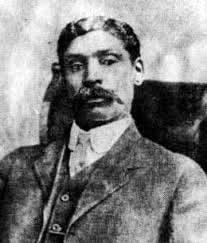Observations of an Intern…
In honor of Black History Month, here is an African American invention highlight!
The lantern has a long history of illumination throughout antiquity. Their first use can be dated all the way back to 230 BC in Ancient China during the Han Dynasty. In the Middle Ages, watchmen would patrol the streets at night while carrying lanterns. They then became more utilized as a source of illumination and protection in the 1500s when lanterns were used to line the streets. For a long time, they acted not only as sources of light but also as sources of hope. This proved to be true in many important historical events in our country’s past. Paul Revere carried a lantern as he made his famous journey in Boston as a signal that the British were coming to attack. They acted as not only warning symbols but as symbols of hope that the future of the country was about to change. One of the most notable uses of lanterns was by Harriet Tubman along the Underground Railroad. As she led slaves to freedom, Harriet carried a lantern to light their way. The journey to freedom was a dangerous one and the lantern served as a symbol of strength and hope that they would reach their end goal.
The question now becomes, “What role does the lantern play in the history of African American invention?” Since lanterns have been used for centuries, it is impossible to pinpoint exactly who invented the very first one. However, we can note the inventors who have improved upon it. One inventor was Michael C. Harvey. Also known as M.C. Harney (with an “n”), he was an African American inventor that sought to improve the lantern. On August 19, 1884, he received patent No. 303844 in St. Louis, Missouri for a lantern or lamp. His invention improved the wick-raisers that were within the oil lanterns. The wick would absorb the oil that was below it and when the lantern was lit, the saturated wick would burn and give off light. Even though we cannot grant Harvey the title of the inventor of the lantern, we can credit him for improving on it.
We have many lanterns in our collection that show the progression and change they underwent as improvements, like the one by Michael C. Harvey, were made. Below are pictures of two different lanterns from our collection. When you look at them, you can now think of Michael C. Harvey and other African American inventors who worked to improve our daily lives through their inventions.
Yours sincerely, Katey Vanscoy
SVSU Intern Castle Museum of Saginaw County History










He invented the wick? You say the wick would absorb the oil, insinuating that older lanterns did not absorb the oil?